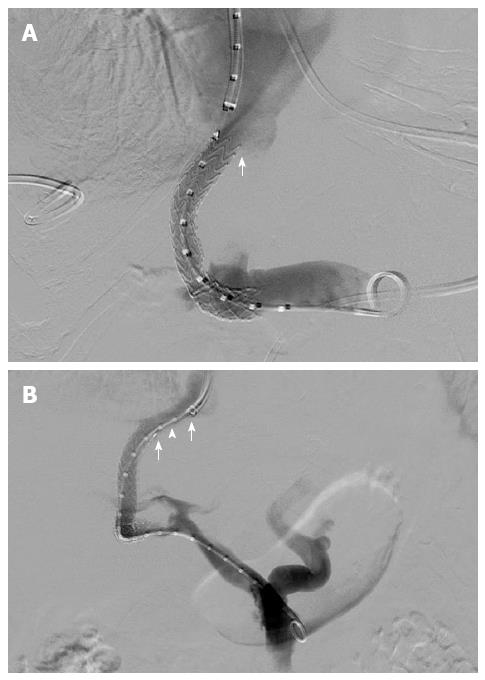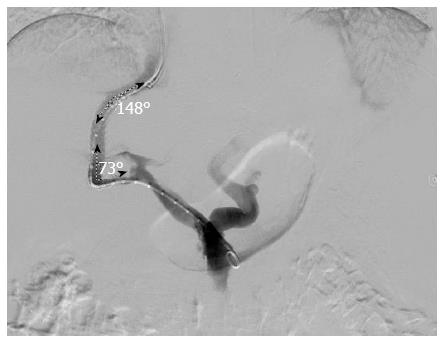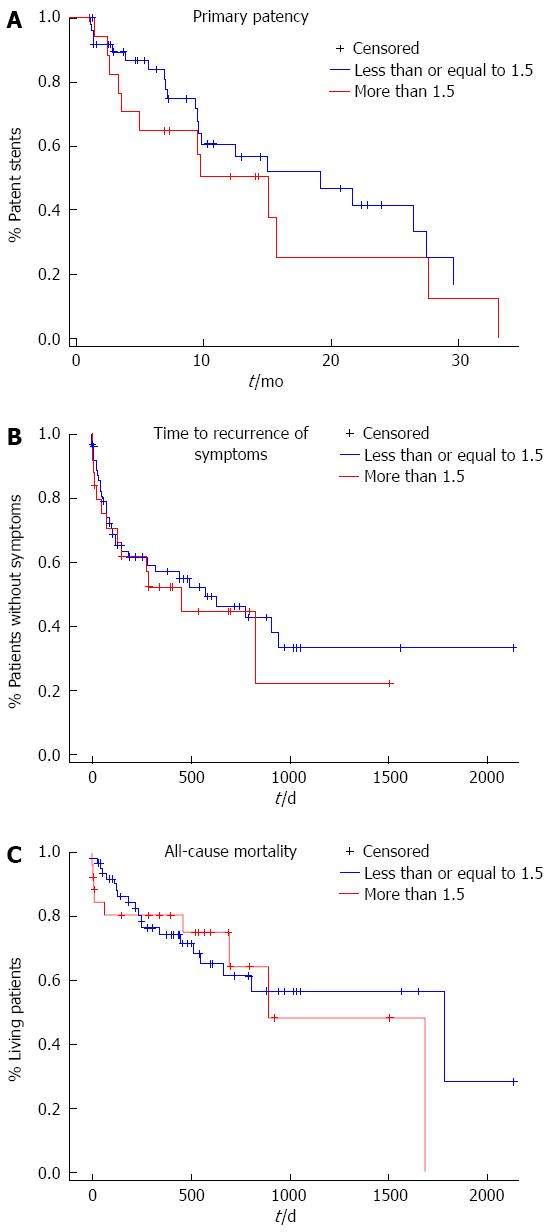Copyright
©The Author(s) 2015.
World J Gastroenterol. Jul 14, 2015; 21(26): 8110-8117
Published online Jul 14, 2015. doi: 10.3748/wjg.v21.i26.8110
Published online Jul 14, 2015. doi: 10.3748/wjg.v21.i26.8110
Figure 1 Digital substraction angiography showing the placement of the hepatic venous end of the transjugular intrahepatic portosystemic shunt stent.
A: Hepatic venous end of the stent at the hepatocaval junction (short arrow); B: Placement of the hepatic venous end of the stent away from the hepatocaval junction (arrow denotes end of stent, arrowhead denotes hepatocaval junction, and triangle denotes unstented hepatic vein).
Figure 2 Digital subtraction illustrating the definition of hepatic vein to parenchymal tract angle (148° above) and portal vein to parenchymal tract angle (73° above).
Figure 3 Kaplan-Meier curves following placement of a transjugular intrahepatic portosystemic shunt using a stent-graft when the stent-to-inferior vena cava distance was less than or equal to 1.
5 cm and more than 1.5 cm. A: Primary patency as a function of time; B: Time to recurrence of symptoms as a function of time; C: All-cause mortality as a function of time.
- Citation: Andring B, Kalva SP, Sutphin P, Srinivasa R, Anene A, Burrell M, Xi Y, Pillai AK. Effect of technical parameters on transjugular intrahepatic portosystemic shunts utilizing stent grafts. World J Gastroenterol 2015; 21(26): 8110-8117
- URL: https://www.wjgnet.com/1007-9327/full/v21/i26/8110.htm
- DOI: https://dx.doi.org/10.3748/wjg.v21.i26.8110











